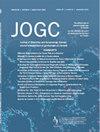Viral Load Testing Practices Among Pregnant People Living With HIV on Admission From Obstetrical Triage
IF 2.2
Q2 OBSTETRICS & GYNECOLOGY
引用次数: 0
Abstract
Objectives
Routine viral load (VL) testing is recommended for pregnant people living with HIV (PLWH) to confirm viral suppression antenatally. The exact timing of this varies in practice. To obtain an up-to-date VL immediately prior to delivery, our institution implemented a policy to test VLs for all pregnant PLWH on admission. Our objective was to characterize testing practices since implementation.
Methods
Retrospective chart review of all pregnant PLWH admitted through obstetrical triage at St. Michael’s Hospital in Toronto, Ontario from January 2013 to December 2022. Outcomes of interest included VL completion status, stratified by year and other competing admission tasks.
Results
This study identified 135 admissions. The majority had VLs ordered (61.5%) and drawn (85.9%) on admission. VL ordering improved over the latter half of the study period (44.6% vs. 82.0%, P < 0.001). More VLs were ordered among Group B Streptococcus-negative patients (71.3%) compared to positive (41.4%) (P = 0.031) and among those who received an epidural (74.2% vs. 50.7%, P = 0.020). More VLs were drawn by nurses among patients who delivered during the admission (90.9% vs. 42.9%, P < 0.001) and patients who received an epidural (93.5% vs. 79.5%, P = 0.019).
Conclusions
While the rate of ordering VLs improved over the course of the study, the rate of drawing VLs remained high throughout, indicating that nurses consistently drew the bloodwork irrespective of an actual order. VL testing improved with the introduction of pre-printed orders, and varied by Group B Streptococcus status, epidural usage, and delivery status. These findings offer opportunities to guide future clinical practices on antenatal VL testing.
从产科分诊入院的艾滋病毒感染孕妇的病毒载量检测实践。
目的:建议孕妇HIV感染者(PLWH)进行常规病毒载量(VL)检测,以确认产前病毒抑制。具体的时间在实践中是不同的。为了在分娩前立即获得最新的VL,我们机构实施了一项政策,对所有怀孕的PLWH在入院时进行VL测试。我们的目标是描述自实现以来的测试实践。方法:回顾性分析2013年1月至2022年12月在安大略省多伦多市圣迈克尔医院(St. Michael's Hospital)通过产科分诊入院的所有妊娠PLWH。感兴趣的结果包括VL完成状态,按年份和其他竞争入学任务分层。结果:本研究确定了135例入院患者。大多数人在入场时订购了vl(61.5%),并抽取了vl(85.9%)。VL排序在研究后期有所改善(44.6% vs 82.0%, P < 0.001)。gbs阴性患者(71.3%)比阳性患者(41.4%)(P = 0.031)和接受硬膜外麻醉的患者(74.2%对50.7%,P = 0.020)订购了更多的vl。入院时分娩的患者(90.9% vs 42.9%, P < 0.001)和硬膜外麻醉的患者(93.5% vs 79.5%, P = 0.019),护士绘制的vl更多。结论:虽然在整个研究过程中,静脉滴注率有所提高,但抽取静脉滴注率始终保持在较高水平,这表明护士无论实际订单如何都坚持抽血。VL测试随着预先打印的订单的引入而改进,并且根据GBS状态、硬膜外使用和交付状态而变化。这些发现为指导未来产前VL检测的临床实践提供了机会。
本文章由计算机程序翻译,如有差异,请以英文原文为准。
求助全文
约1分钟内获得全文
求助全文
来源期刊

Journal of obstetrics and gynaecology Canada
OBSTETRICS & GYNECOLOGY-
CiteScore
3.30
自引率
5.60%
发文量
302
审稿时长
32 days
期刊介绍:
Journal of Obstetrics and Gynaecology Canada (JOGC) is Canada"s peer-reviewed journal of obstetrics, gynaecology, and women"s health. Each monthly issue contains original research articles, reviews, case reports, commentaries, and editorials on all aspects of reproductive health. JOGC is the original publication source of evidence-based clinical guidelines, committee opinions, and policy statements that derive from standing or ad hoc committees of the Society of Obstetricians and Gynaecologists of Canada. JOGC is included in the National Library of Medicine"s MEDLINE database, and abstracts from JOGC are accessible on PubMed.
 求助内容:
求助内容: 应助结果提醒方式:
应助结果提醒方式:


